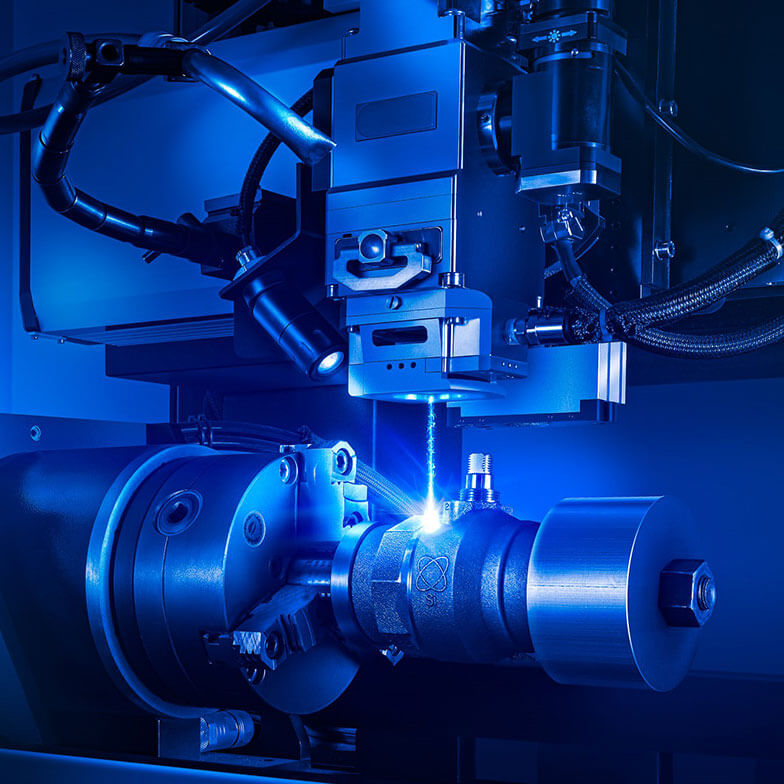
NIBCO INC. Appreciates the Benefits of Laser Over Other Welding Processes
Many types of welding have been proven performers for a long time. Welding is, at its core, simply a way of joining two materials. While there are other ways to join metal (e.g., riveting, brazing, or soldering), welding has become the method of choice for its availability, high performance, and high strength.
Essentially, all welding processes are the same: melt the metal in a seam so that it can blend, then fuse—forming one piece. This process is achieved (more or less) satisfactorily depending on the materials in the two pieces, the welder’s experience, the method used, and the costs in time and labor. Weld strength and appearance are also factors. NIBCO INC. favors laser welding for its strength and efficiency. NIBCO INC. is an MCAA major sponsor.
Bringing Metals Together, One Weld at a Time
The welding process dates to the Bronze Age (~3300 BCE to 1200 BCE), when copper alloys were heated until the metal softened, then pounded together with a hammer on an anvil to create a forge weld. Now, 5,000 years later, there are three basic welding techniques:
- Gas welding
- Arc welding
- Laser welding
Traditional welding methods (e.g., gas and arc) generate large amounts of heat. Some techniques can create so much heat that the welded pieces can warp and distort, which can ruin the work piece or require a heat treatment or other remedial actions (adding to the cost). Welding requires skill, training, and specialized, expensive equipment.
Gas welding requires bottles of acetylene and oxygen. The acetylene is mixed with the oxygen to create a flame that can be used to melt metal. Gas welding is a slow process.
Arc welding uses closely controlled, high-amperage electricity to form an arc from the electrode to the work pieces. The welding power source is a transformer that modifies incoming AC power so that it can create an arc that melts the work pieces. Filler rod is typically used in this process.
The Future Is Now
 Laser welding, compared with forge welding, is a relatively new technology. It is used in many high-tech industries, including automotive, aerospace, and oil and gas. Laser welding uses a high-energy laser beam to melt the materials being joined. The metals then rapidly solidify after the laser moves on or turns off. Laser welding, when used for joining valve components, increases the pressure-containing ability of the valve as compared with a traditional, threaded assembly. The process is repeatable, efficient, and strong, producing high-quality assemblies.
Laser welding, compared with forge welding, is a relatively new technology. It is used in many high-tech industries, including automotive, aerospace, and oil and gas. Laser welding uses a high-energy laser beam to melt the materials being joined. The metals then rapidly solidify after the laser moves on or turns off. Laser welding, when used for joining valve components, increases the pressure-containing ability of the valve as compared with a traditional, threaded assembly. The process is repeatable, efficient, and strong, producing high-quality assemblies.
Laser welding is very precise, fast, and clean. Lasers are also flexible. Different operations, such as cutting or drilling, can be accomplished through straightforward machine setup changes. Depending on the types of materials being welded, different welding equipment and supplies are required. Although laser welding equipment is capital intensive, operating costs are low.
Lasers provide the accuracy, repeatability, speed, and confidence modern manufacturers want. Lasers generate more concentrated heat (high-power density) than arc and gas welding. Laser energy can be focused precisely to make the smallest-possible weld seam. Those attributes make the laser ideal for welding thin, heat-sensitive products, as well as for joining dissimilar materials, such as copper and aluminum. Bronze alloys lend themselves well to most welding processes, and laser is no exception.
So, for what types of applications would laser welding offer the most advantages? Laser welding is best applied to production lines where its precision, repeatability, speed, and safety can be controlled. Laser welding consistently repeats the weld from the first part to the final part in the production run.
For more information, visit www.nibco.com. MCAA thanks NIBCO INC. for being a major sponsor.


